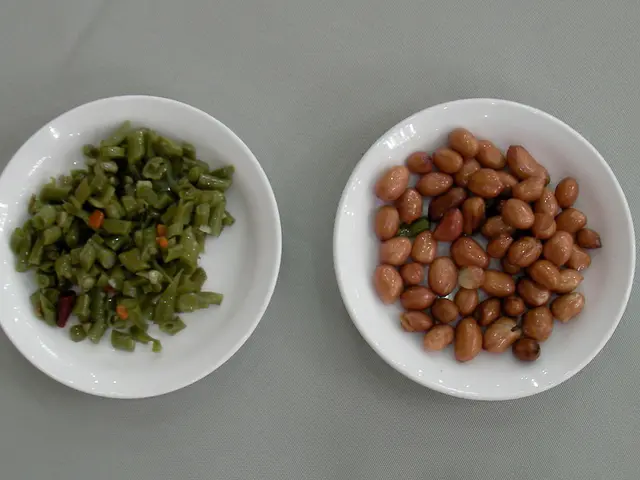Developing test may eradicate a common cause of genetic blindness in canines
Dogs, contrary to popular belief, do not see the world in black and white. While their color vision is limited compared to humans, they primarily perceive blues and yellows, with difficulty distinguishing reds and greens [1][2][3]. This is due to their dichromatic color vision, similar to how humans with red-green color blindness see the world.
However, a less vibrant color palette is the least of our canine friends' concerns when it comes to eye health. Progressive Retinal Atrophy (PRA), a condition that affects over 100 dog breeds, is a significant threat. PRA affects the light-sensitive cells at the back of the eye, causing vision problems in dimmer lighting and eventually leading to full blindness [4].
In a groundbreaking development, a team of researchers, led by Katherine Stanbury from the University of Cambridge, has identified a new genetic variant responsible for PRA in English Shepherds. This discovery was facilitated by Shola, an English Shepherd who helped scientists in their quest [5].
The team carried out whole genome sequencing on Shola and her brother's DNA, leading to the identification of the new variant. To help prevent PRA in English Shepherds, a £48 DNA test has been developed. This test shows whether dogs have two, one, or no copies of the new variant [6].
Breeding from carriers (dogs with one copy of the variant) is still possible as long as they are bred with dogs with no copies. Shola's offspring have been tested, and none of them are expected to develop PRA due to the testing of their father [7].
Interestingly, Shola's family has made significant contributions beyond PRA research. One of her sons is a therapy dog, while one of her offspring recently saved a man's life [8]. Two of her daughters have completed mountain rescue training with Mountain Rescue England [9].
This new DNA test offers hope for English Shepherd owners and breeders, allowing them to identify and address PRA early on. By doing so, they can ensure their dogs maintain their vision and continue to contribute to our lives in countless ways.
References:
- Dogs' Colour Vision
- How Dogs See Colors
- Dogs' Color Vision: Fact vs. Myth
- Progressive Retinal Atrophy in Dogs
- English Shepherd Helps Scientists Create New Test for Progressive Retinal Atrophy
- New DNA Test for Progressive Retinal Atrophy in English Shepherds
- Breeding English Shepherds Free of Progressive Retinal Atrophy
- English Shepherd's Son Becomes Therapy Dog
- English Shepherd's Offspring Saves Man's Life
- While dogs may have a limited color vision compared to humans, concerns for their eye health span beyond color perception, with Progressive Retinal Atrophy (PRA) affecting over 100 dog breeds.
- A new genetic variant responsible for PRA has been identified in English Shepherds, thanks to the help of an English Shepherd named Shola and her DNA sequence analysis.
- To aid in the prevention of PRA in English Shepherds, a £48 DNA test has been developed, determining whether dogs have two, one, or no copies of the new variant.
- Breeding from carriers (dogs with one copy of the variant) is still possible, as long as they are bred with dogs with no copies, ensuring offspring are less likely to develop PRA.
- Beyond PRA research, Shola and her family have made significant contributions to our lives; one of her sons is a therapy dog, one of her offspring saved a man's life, and two of her daughters completed mountain rescue training with Mountain Rescue England.
- This new DNA test offers hope for English Shepherd owners and breeders, ensuring their dogs maintain their vision and continue to contribute positively to our world in numerous ways, from fitness and exercise, mental health, nutrition, health-and-wellness, and beyond.







